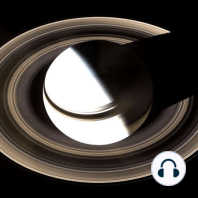77 min listen

Chasing New Horizons: Inside the Epic First Mission to Pluto (with Alan Stern & David Grinspoon)
Chasing New Horizons: Inside the Epic First Mission to Pluto (with Alan Stern & David Grinspoon)
ratings:
Length:
104 minutes
Released:
Jun 24, 2022
Format:
Podcast episode
Description
In July 2015, the New Horizons spacecraft flew by Pluto, revealing its surface to our view for the first time. In this program, Drs. Alan Stern and David Grinspoon give us an insider's view of how this complex mission came to be and what it discovered at the edge of our solar system. Their recent book (with the same title) tells the full story of the mission, its ground-breaking discoveries at Pluto, and where it's going next. Here is the story of path-breaking exploration and new science, straight from the source, with insight into what it's like to be part of a planetary mission that goes to a destination never before visited. (Recorded May 15, 2018)
Released:
Jun 24, 2022
Format:
Podcast episode
Titles in the series (45)
What Does a Black Hole Look Like: How We Got our First Picture (With Prof. Eliot Quataert) by Silicon Valley Astronomy Lectures